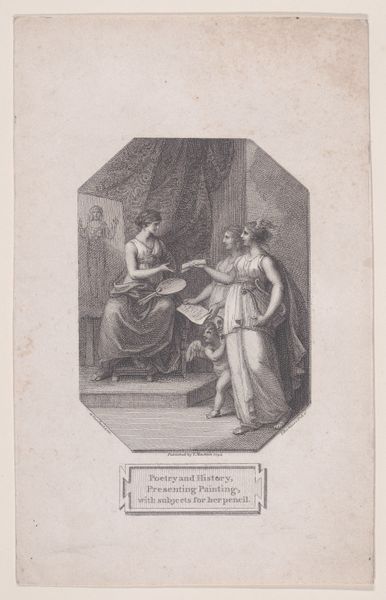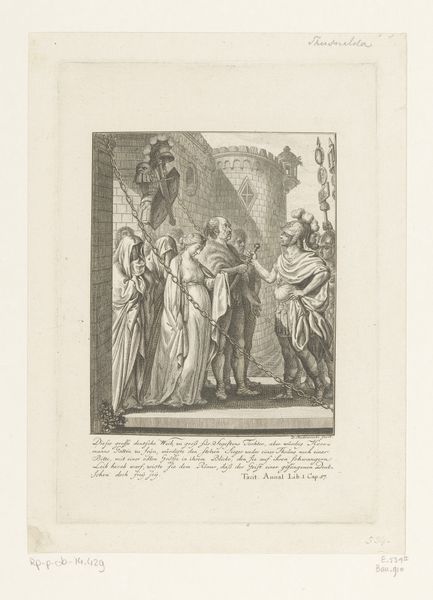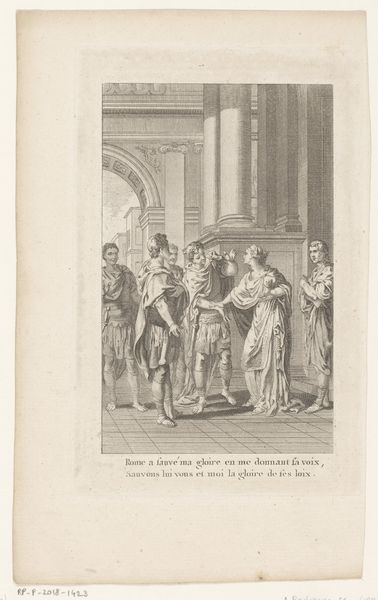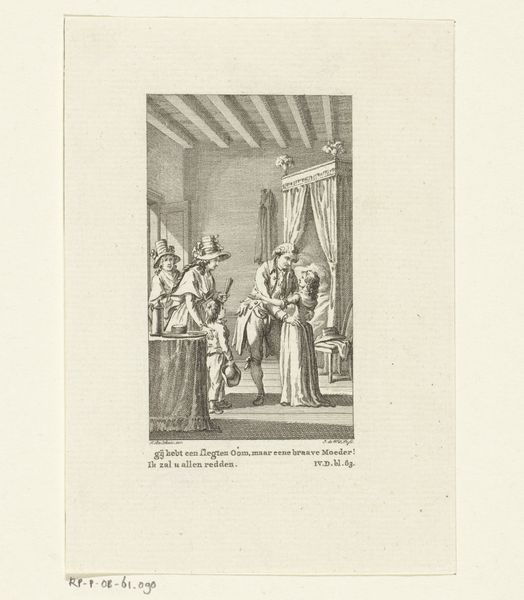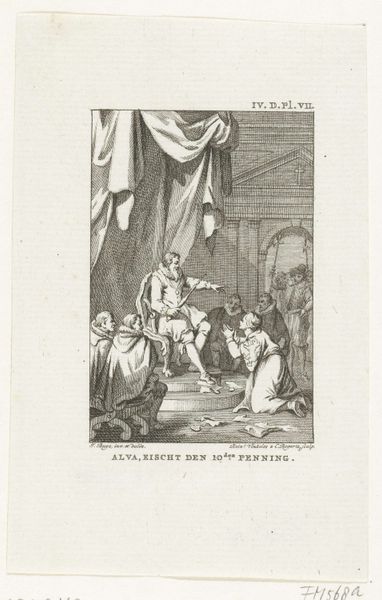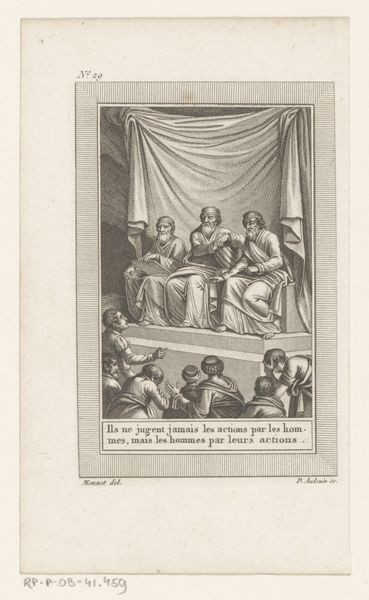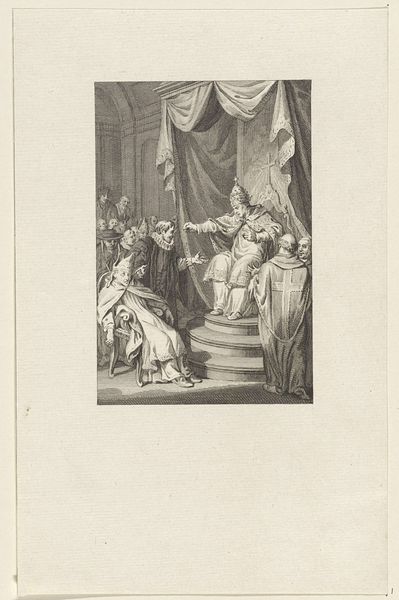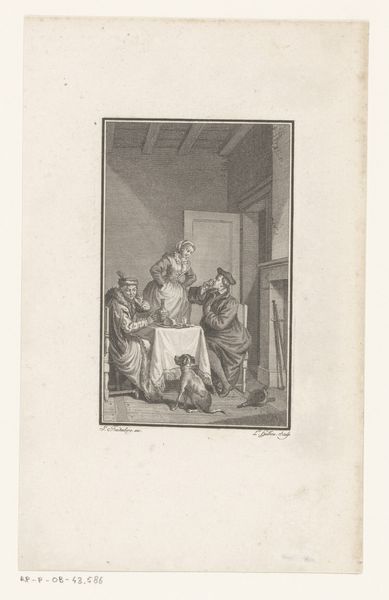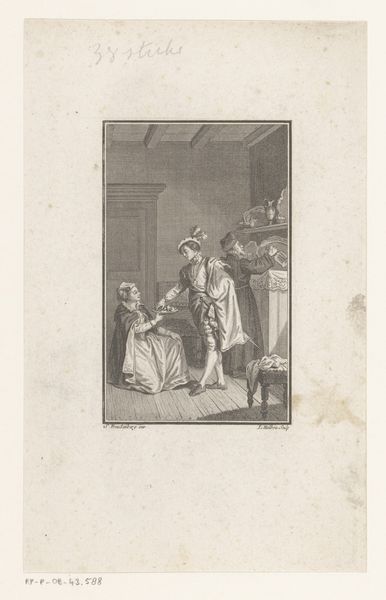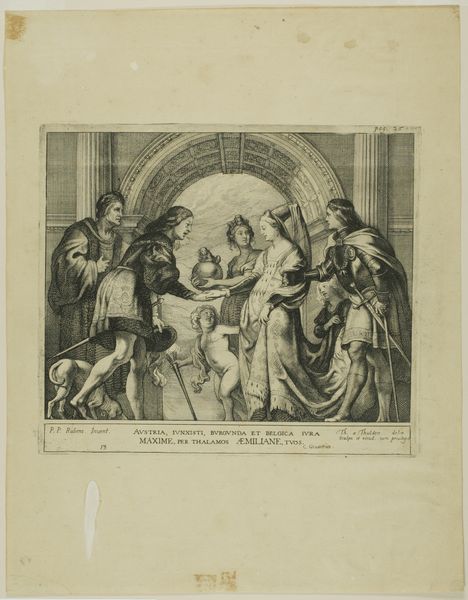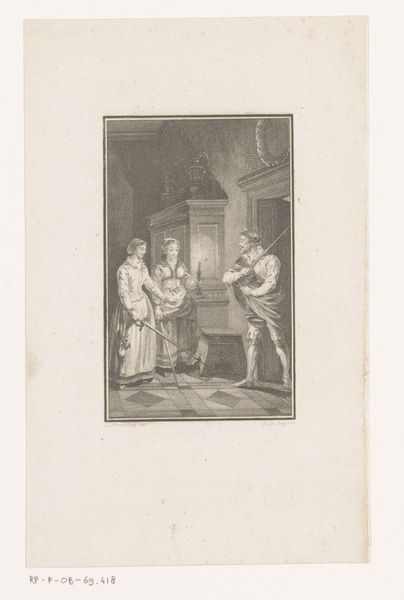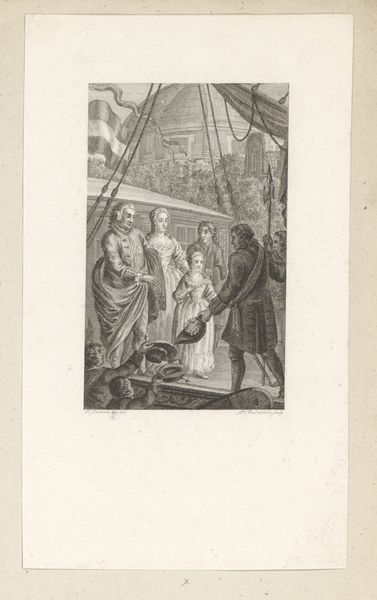
print, engraving
#
neoclacissism
# print
#
old engraving style
#
figuration
#
personal sketchbook
#
line
#
history-painting
#
engraving
Dimensions: height 155 mm, width 93 mm
Copyright: Rijks Museum: Open Domain
This engraving by Pierre Audouin, made around the late 18th century, depicts Hero and Leander, dominated by a classical altar. A burning flame sits atop the altar, a potent symbol of devotion, but also of danger. Here, this symbol evokes the ancient world and its themes of love, sacrifice, and inescapable fate. This element appears in the story of Iphigenia, signifying a pact with the gods. The flame is a recurring motif in art and human consciousness, representing transformation and destruction. It speaks to our collective memory, echoing through the ages in various forms. Consider the ever-burning Olympic flame, or a candle for lost souls in a church, demonstrating how the symbol has evolved and adapted, yet remains connected to primal human experiences and emotions. The burning flame calls to us on a subconscious level, sparking a deep, instinctive connection to both the past and the present.
Comments
No comments
Be the first to comment and join the conversation on the ultimate creative platform.
